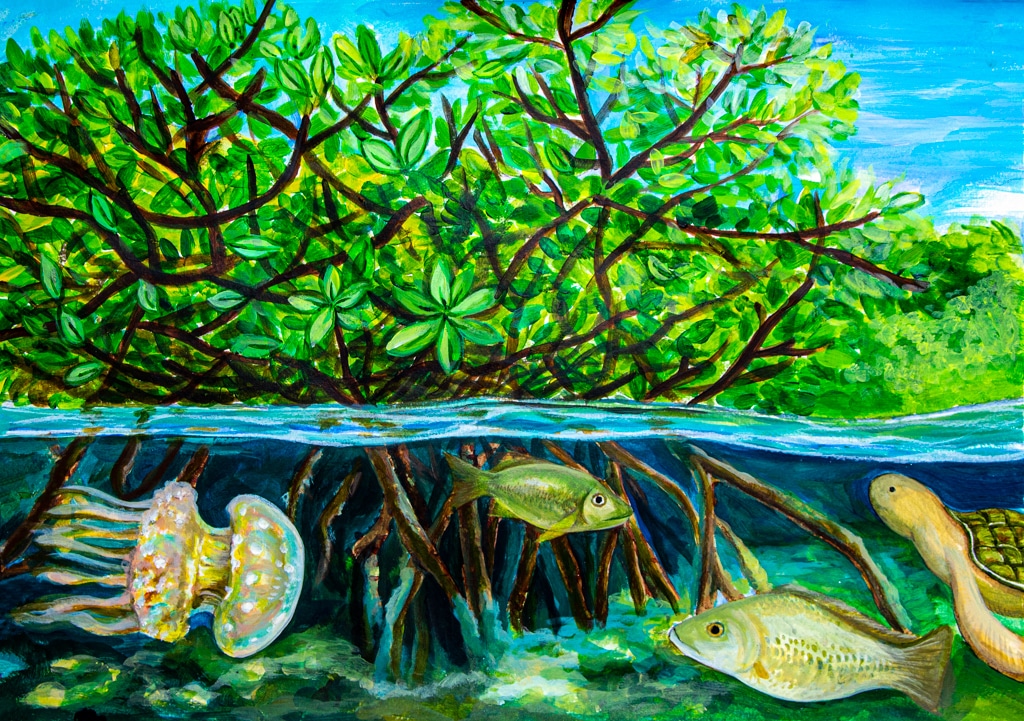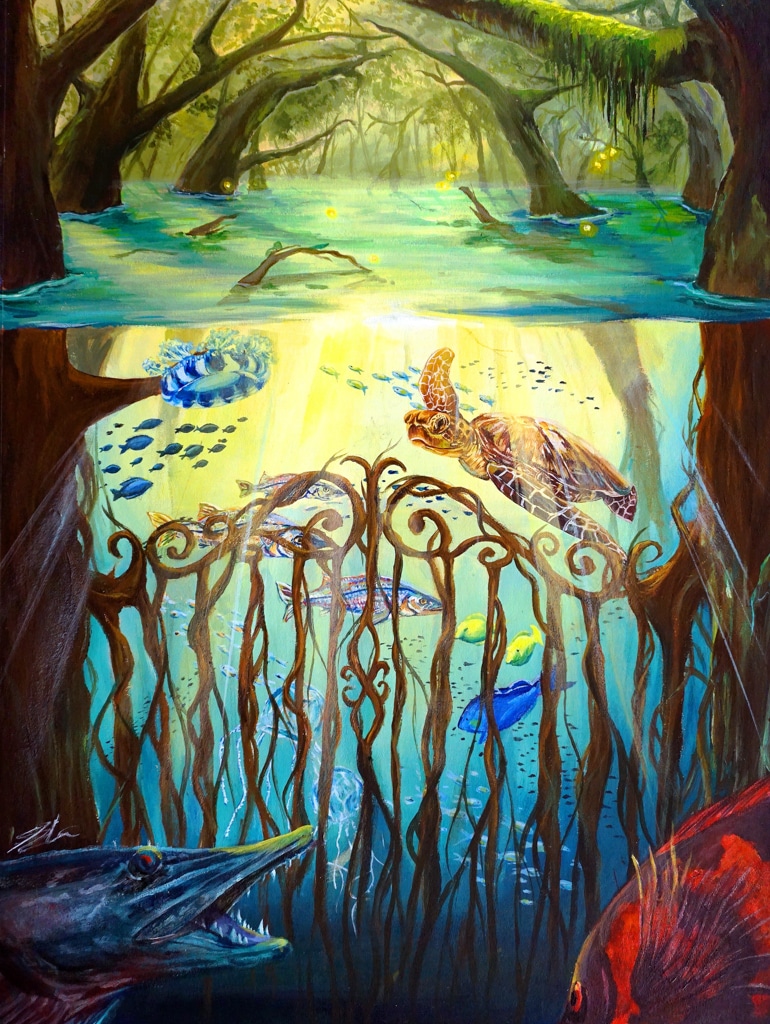Happy Earth Week! One of the ways we are celebrating Earth Week this year is by announcing the Science Without Borders® Challenge finalists. Each year we choose an ocean conservation theme to encourage students and teachers to learn about different important ocean topics. Our goal is for students to not only learn about the theme through art, but also create artwork that inspires others to want to learn about it too.
The theme for this year’s art contest was “The Magic of Mangroves.” Students were asked to learn about the importance of mangroves, that are not only essential to the wellbeing of the planet, but also are an essential resource for humans too. Based off responses from our student surveys, many learned a great deal about mangroves and came to appreciate them. Here is what some of our participants said:
“I am thankful that you gave us the opportunity to portray our thoughts with the medium of art and for this I learned about the importance of Ocean marine life and about the mangroves. I’m eager to visit the places where I can found mangroves naturally with my family. We will soon plan to see. I also want to be the part of any campaign regarding saving nature, mother earth and the environment.”
–Student age 11, Pakistan
“Before coming in contact with Science Without Borders I wasn’t aware of the depth of (importance of) the oceans. A major part of the oceans is a mystery still. I am thankful to Science Without Borders for their work in spreading the awareness and more.”
–Student age 13, India
“When I was working on my painting, the back of my mind keeps telling me that you do not have enough skills to compete. However, it did not matter to me even if my painting is not as amazing as the other participants, but it is my love for the ocean and the desire to protect the environment. It was what became my motivation to finish my work despite having a lot of school requirements to do.”
–Student age 17, Philippines
“I loved participating in this challenge. I had a little bit of knowledge about mangrove fauna, but I did not realize how important the flora was. I learned so much researching for my art. I definitely recommended this challenge to any middle or high-schooler.”
–Student age 15, United States
“I loved working on my artwork because I could give my artwork meaning while helping other people understand something important for everyone.”
–Student age 15, Germany
Each year these young artists inspire us to want to do more for the environment. Their passion for the ocean is evident and contagious. This Earth Week, we hope that these youth will inspire you to want to do more for the environment too. Without further ado, we are pleased to announce our Science Without Borders® Challenge finalists.
Finalists of the 2021 Science Without Borders® Challenge
Entries to the Science Without Borders® Challenge are judged in two categories based on age. Here are the finalists in each category:
Younger Students: 11-14 Years Old
"Home of Our Mangrove Creatures" by Gwyneth Chun, Age 13, Republic of Korea
Artist's Statement: Mangroves are really important not only in forests but even in water. Sea animals are one of the most important animals that need mangroves. They provide a home to sea animals and prevent erosion from waves and storms. After I learned this, I decided to incorporate different animals in the water such as fishes, jellyfish and turtles and others. As you can see in my artwork, I drew many mangroves on the surface and in the water. Under the water you can see sea animals with a variety of colors. I incorporated this to show how healthy and happy they are around mangroves. I wanted to show that Mangroves are able to benefit different animals, which is also why I drew various kinds of living creatures under and above the water.
Older Students: 15-19 Years Old
"The Guardians of the Sea" by Sharon Choi, Age 16, California, United States of America
Artist's Statement: Over the years, human activities have caused huge biodiversity loss in marine ecosystems, endangering many plants and animals. However, mangrove trees are a nutrient-rich breeding ground that supports an incredible array of wildlife. In my piece, the mangrove roots intertwine to form a shielding gate to protect swimming species from their predators. Several crabs, shrimp, and fish rely on the intricate network of roots in their early stages of life before entering the open ocean as adults. If we clear mangrove forests, we threaten the survival of over 1,300 species, including numerous fish and sea turtles. Mangrove trees are known to be survivors that thrive in extreme conditions that are deadly to most plants. However, we must ask ourselves if mangroves will also be capable of surviving the accumulative pressures of climate change and an expanding global footprint of human development that are already affecting them at an alarming rate.



One Comment on “Announcing Finalists in the 2021 Science Without Borders® Challenge”
Jan Baldwin
Those young artists are not only talented, but have messages about the value of the world’s mangroves and the need to protect them. Bravo!